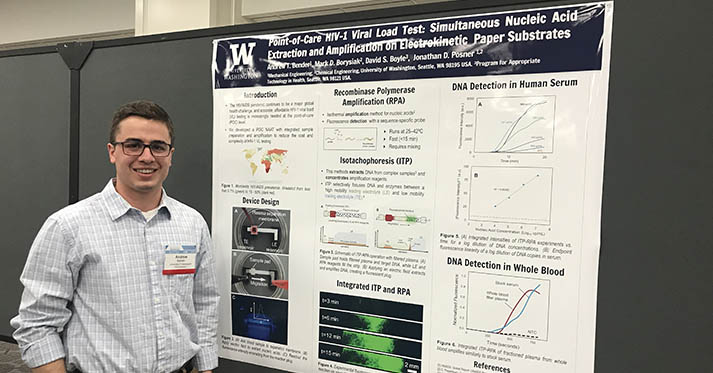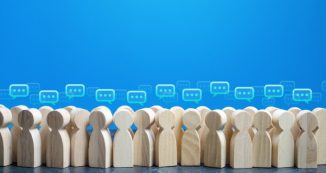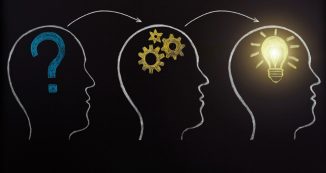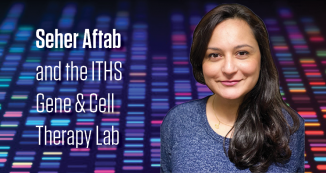
02 May Engineering the Path from Research Discoveries to Health-Improving Products
ITHS TL1 Translational Research Trainee Andrew Bender presented at this year’s Association for Clinical and Translational Science (ACTS) meeting in Washington, DC. Bender was not only representing the ITHS TL1 cohort, but also a newer, and growing community of engineers in translational research. As a PhD candidate in Mechanical Engineering, Bender would not typically be exposed to the clinical research community, however his undergraduate involvement in global health led him onto a path towards engineering products for medicine. Through his experience working to bring clean water and proper sanitation to a community in rural western Kenya, Bender says he “developed a passion for global health and improving the lives of people”. This experience illuminated the potential for direct health-related impact from engineering solutions.
At ACTS, Bender was invited to give a talk and present a poster on a point-of-care diagnostic test which is being developed to help physicians determine the viral load of a patient with HIV/AIDS during a single visit. According to the World Health Organization, almost 37 million people in the world are living with HIV/AIDS. Only a fraction of these people receive treatment – an activity that can seem as a burden to some. Patients living with HIV receive regular viral load monitoring, which means every three months, they have to return to the doctor in order to undergo a test to determine the prevalence of the virus and whether or not the treatment plan is working as it is intended. In the US, this process works well; patients go to the doctor to give a blood sample, the sample is sent to a lab, and the results are returned to the doctor within a couple of days. However, in some places, regular communication between doctors and patients is not easy, or these laboratories simply do not exist. It becomes difficult for the necessary follow-up to get patients the treatment they need. The solution Bender is working on as part of a team within Dr. Jonathan Posner’s Lab provides an alternative timeline. Patients only need to connect with their doctors once; the diagnostic device is not as complicated as lab equipment, and can share results within minutes instead of days.
Everyone seems to have something that does not quite work as it should. There should be a better way to do this
Being a Translational Research TL1 Scholar, and presenting at the ACTS conference provided an opportunity for Bender to receive feedback on his work and interact with clinicians and researchers from other disciplines. These experiences spark a dialogue across the entire spectrum of translational researchers. “Everyone seems to have something that does not quite work as it should; there should be a better way to do this,” Bender says of his discussions with clinicians at the UW and at the ACTS conference. In order to make these improvements, and develop the right tools, there needs to be a conversation among multiple stakeholders. In Bender’s experience, clinicians often recognize a problem, or need, but do not have the time or expertise to issue a solution. Conversely, as an engineer, Bender recognizes that he may not have as much knowledge about clinical studies. Training in a translational setting, Bender has found that he is able to learn about research processes and the necessary design considerations that must be made in order to translate devices into practice. Bender has the practical skills and a problem-solving mentality, therefore he sees engineering as an opportunity to realize “natural fixes” for challenges by serving as link between fundamental discoveries in science and devices or products which improve healthcare.
When asked what the ITHS TL1 Translational Research Training Program has done for him, Bender responded saying it has given him the chance to “expand [his] horizons and gain competencies in the health care field.” Though he is graduating from the program this month, Bender looks forward to remaining involved with ITHS and continuing to build his network across the diverse translational research workforce.







